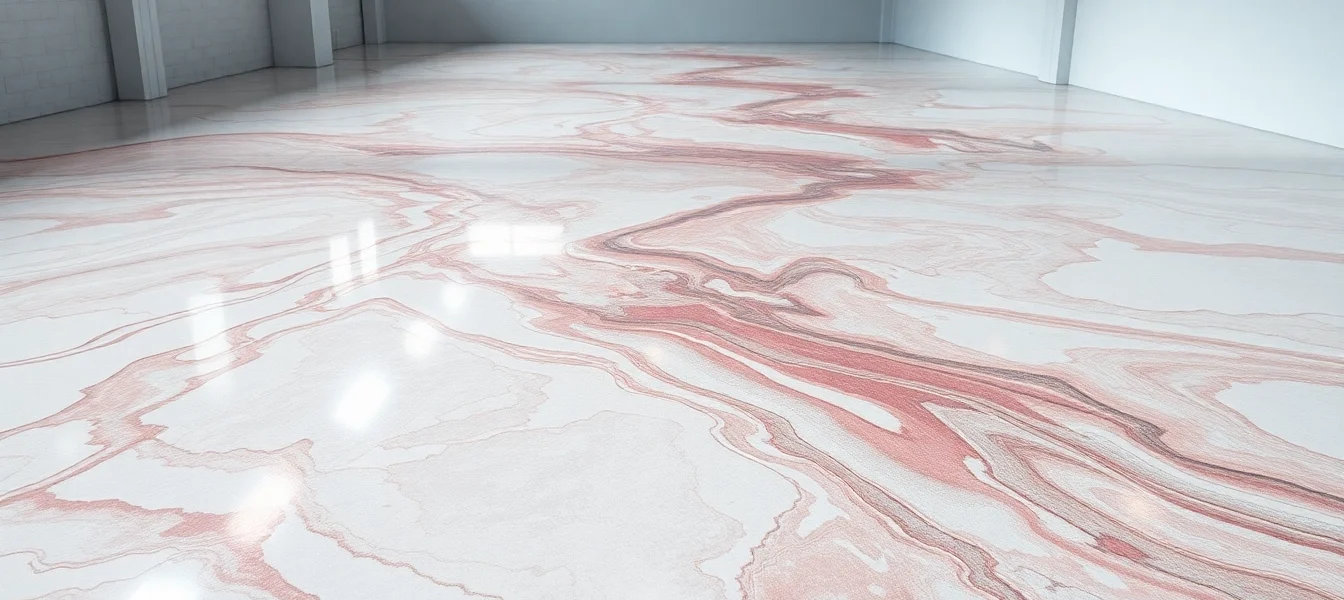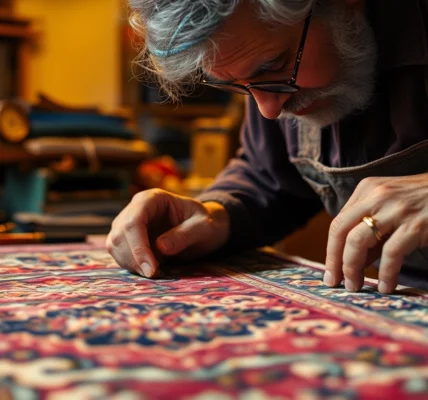Epoxy Resin Floor Solutions for Durable and Stunning Flooring Keeps Your Space Elevated
Understanding Epoxy Resin Floors: Benefits and Applications
What is an epoxy resin floor and how does it work?
An epoxy resin floor is a type of durable, high-performance flooring solution created by applying a coating of epoxy resin onto a concrete substrate. Epoxy, a synthetic resin, chemically bonds to the concrete surface, forming a seamless, robust, and chemically resistant layer. This layer not only enhances the aesthetic appeal but also significantly improves the floor’s strength, chemical resistance, and lifespan.
The process involves preparing the concrete surface by cleaning, etching, or roughening it to promote adhesion. The epoxy resin is then mixed, often with various additives, and applied in multiple coats depending on the desired thickness and finish. Once cured, the result is a resilient surface capable of withstanding heavy loads, abrasions, and chemical spills, making it ideal for a wide range of environments.
Modern epoxy formulations are engineered for specific purposes, from decorative finishes to industrial-grade coatings. Self-leveling epoxy systems, for instance, flow into a smooth, glossy surface, while non-slip variants incorporate textured additives to improve safety without compromising durability.
Key advantages for residential and commercial spaces
Epoxy resin floors offer compelling advantages that cater to both residential and commercial needs:
- Durability: Epoxy coatings provide exceptional resistance to impact, cracking, and abrasion, extending the floor’s functional life.
- Chemical Resistance: Resistant to oils, solvents, and acids, making it ideal for garages, workshops, and factories.
- Ease of Maintenance: Their seamless surface prevents dirt accumulation and simplifies cleaning routines.
- Aesthetic Flexibility: Wide array of decorative options including color, texture, metallic effects, and embedded design elements.
- Cost-Effectiveness: Long-lasting with minimal upkeep, epoxy floors reduce long-term expenses compared to other flooring types.
- Quick Installation and Curing: Rapid curing times enable fast project turnaround, minimizing disruption.
These advantages make epoxy floors highly versatile, appealing to homeowners upgrading garages or basements and businesses needing high-performance industrial flooring.
Common industries and environments using epoxy flooring
Epoxy flooring is prevalent across a spectrum of industries:
- Industrial and manufacturing facilities: For heavy-duty, impact-resistant, and chemical-resistant surfaces.
- Warehouses and logistics centers: To withstand forklift traffic and heavy loads.
- Healthcare and laboratories: Providing hygienic, sterile, and easy-to-clean surfaces.
- Retail spaces and showrooms: Offering aesthetic flexibility to enhance visual appeal.
- Residential garages and basements: For durable, stylish, and easy-maintenance floors.
- Food processing plants: As epoxy systems can be formulated to meet hygiene standards and resist sanitation chemicals.
Understanding the specific needs of each environment helps in selecting the most suitable epoxy formulation, whether it’s a high-traffic industrial setting or a decorative residential finish.
Choosing the Right Epoxy Resin Floor: Types and Customizations
Self-leveling vs. non-slip epoxy floors
One of the critical decisions when selecting an epoxy floor is choosing between self-leveling and non-slip variants:
Self-leveling epoxy floors
Designed for a smooth, glossy finish, self-leveling epoxy is formulated with a fluid consistency that spreads evenly over the surface, filling in minor imperfections of the concrete slab. Suitable for areas where appearance matters, such as showrooms or residential garages, they provide a sleek and reflective surface that enhances lighting and creates an illusion of space.
Non-slip epoxy floors
Incorporating textured additives like aluminum oxide or silica, non-slip epoxy coatings prioritize safety in high-traffic or wet environments, such as industrial kitchens, manufacturing floors, or outdoor patios. They maintain durability while reducing the risk of slips and falls, essential for commercial and safety-critical spaces.
Design options: color, finish, and decorative effects
Epoxy flooring offers remarkable aesthetic versatility:
- Color customization: From neutral greys to vibrant hues, epoxy can be tinted to match branding or personal design preferences.
- Finish types: Glossy to matte, textured to smooth, catering to lighting conditions and safety requirements.
- Decorative effects: Metallic epoxy layers create a striking, high-end appearance; embedded chips and quartz aggregates add texture and visual interest; and custom logos or patterns can be incorporated for branding purposes.
These options are particularly appealing for commercial spaces wanting to impress customers or homeowners seeking a personalized touch.
Factors influencing selection: durability, UV stability, and budget
When choosing an epoxy system, consider:
- Durability requirements: Heavy industrial use vs. decorative residential needs influence resin formulation selection.
- UV stability: Outdoor applications or spaces with high sunlight exposure require UV-resistant coatings to prevent yellowing or degradation.
- Budget considerations: Basic kits are cost-effective but may require professional installation for premium finishes; high-end systems include advanced features like anti-slip and UV stability but come at higher costs.
Matching these factors ensures a balanced choice aligned with performance expectations and financial planning.
Step-by-Step Installation Guide for Epoxy Resin Floors
Preparation of concrete substrate for optimal bonding
Proper preparation is critical to ensure maximum adhesion and durability:
- Cleaning: Remove all dirt, grease, oil, and previous coatings using degreasers and mechanical scrubbing.
- Etching or grinding: Use acid etching or aggressive grinding to create a rough surface—ideally achieving a surface profile of CSP 3-5.
- Repairs: Fill cracks and pockmarks with suitable patching compounds and allow curing.
- Moisture testing: Confirm the concrete slab’s moisture level is within acceptable ranges (<4%) to prevent bubbling or delamination.
Mixing and applying epoxy coatings effectively
Once the surface is prepared:
- Mixing: Follow manufacturer instructions meticulously, mixing resin and hardener in correct ratios, avoiding introducing air bubbles.
- Application: Use rollers, squeegees, or sprayers, depending on the system and desired finish. For decorative layers, consider applying with care to avoid streaks or uneven thickness.
- Multiple coats: Apply a primer or base coat, followed by intermediate and top coats, with appropriate drying times between layers.
Maintaining a controlled environment—temperature around 15-25°C and low humidity—optimizes curing and final appearance.
Drying times, curing, and quality checks
After application:
- Initial cure: Typically 12-24 hours, during which the surface remains sensitive to foot traffic.
- Full curing: Usually takes 7 days to reach maximum hardness and chemical resistance.
- Inspection: Check for bubbles, delamination, or uneven color. Lightly sanding and recoating may be necessary if imperfections are found.
Ensuring proper curing through temperature and ventilation control is vital for long-lasting results.
Maintenance and Longevity of Epoxy Resin Floors
Cleaning routines for glossy preservation
Regular cleaning with gentle pH-neutral cleaners and soft mops preserves the glossy finish. Avoid harsh abrasives or acidic/alkaline cleaners that can degrade the epoxy surface over time.
Repairing cracks and surface damages
Small surface damages can be repaired using epoxy patching compounds. For cracks, clean out debris, apply an epoxy filler, and finish with a matching topcoat. Periodic inspections help identify issues early, extending the floor’s lifespan.
Tips to extend the lifespan of your epoxy flooring
To maximize durability:
- Implement protective measures like anti-slip coatings in high-traffic zones.
- Use protective mats or pads under heavy machinery to prevent surface damage.
- Maintain proper humidity and temperature during curing and in ongoing use.
- Schedule routine inspections and address minor repairs promptly.
Enhancing Your Space with Advanced Epoxy Flooring Techniques
Incorporating decorative chips and metallic effects
Decorative chips embedded within epoxy layers can create a textured, high-end look, perfect for showrooms or stylish basements. Metallic epoxy systems, infused with pigments that mimic metal surfaces, add depth, movement, and a luxurious touch to the floor.
Using UV-stable and anti-slip coatings for safety
Outdoor or sun-lit indoor areas benefit from UV-stable epoxies that resist yellowing and degradation. Anti-slip aggregates enhance safety in moist or high-traffic zones without compromising aesthetics.
Innovative options: polyaspartic and high-performance systems
Polyaspartic coatings, offering rapid curing and UV stability, are gaining popularity for industrial and commercial spaces. High-performance epoxy systems combine chemical, impact, and abrasion resistance with customized finishes, ensuring longevity under demanding conditions.




